Summary
» Country? Thailand.
» In a few words, what is the idea? It occurs throughout Thailand, but the most famous water battles are those of Chiang Mai. Nevertheless, the celebration is much more, an opportunity to learn about Thai beliefs and observe social life.
» Duration? At least two nights, one full day.
» For whom? Battles with water are for all travellers, the rest of rites and customs for those with broader interests.
» Where? All the country, but we recommend Chiang Mai.
» When? April 13,14 and 15.
Description
The Songkran festival is held throughout the whole country and it marks the New Year on the traditional Thai calendar. In the past, the dates when it was held varied depending on the horoscope, until finally it was decided that the festival would be celebrated from 13 to 15 of April.
This is a time of renewal, good deeds and hopes for the New Year. A special occasion when the Thais return to their places of origin and people visit their elderly relatives to honour them and receive their blessings.
Later they flock to the Buddhist monasteries to be purified by water and to pay their respects to the monks with food offerings. Birds are freed and fish are set loose as part of a series of actions aimed at gaining merit to improve the karma and bring them the fortune.
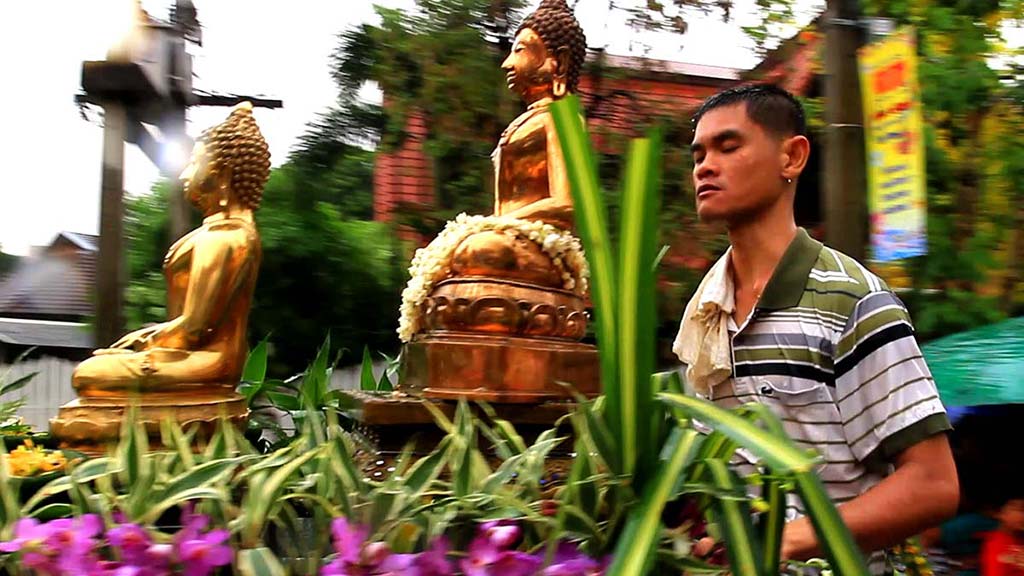
The Buddhist liturgy extends to the entire community with the afternoon processions in the streets, such as those shown in the images, of Chiang Mai.
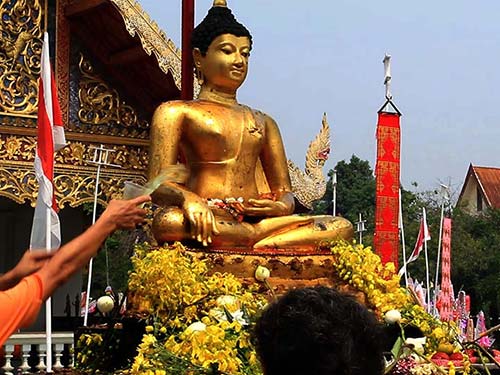
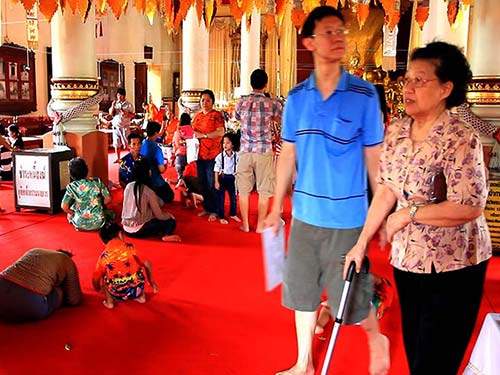
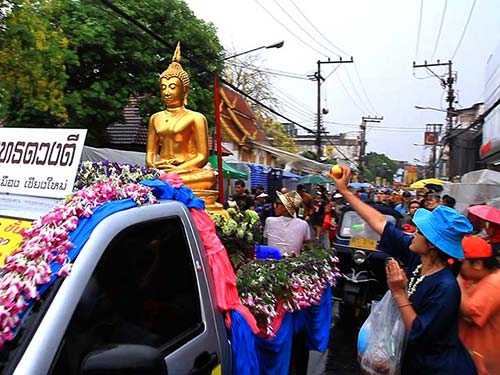
Two of the main ingredients of the celebration are water and fun, a tempting combination precisely when the summer temperatures are at their hottest.
Water battles are always tremendous, unforgettable events as you can see in the photos.
The month of April is part of Thailand’s summer, a season of suffocating heat when it is essential to seek the protection of the shade and avoid any type of stressful outdoor activity.
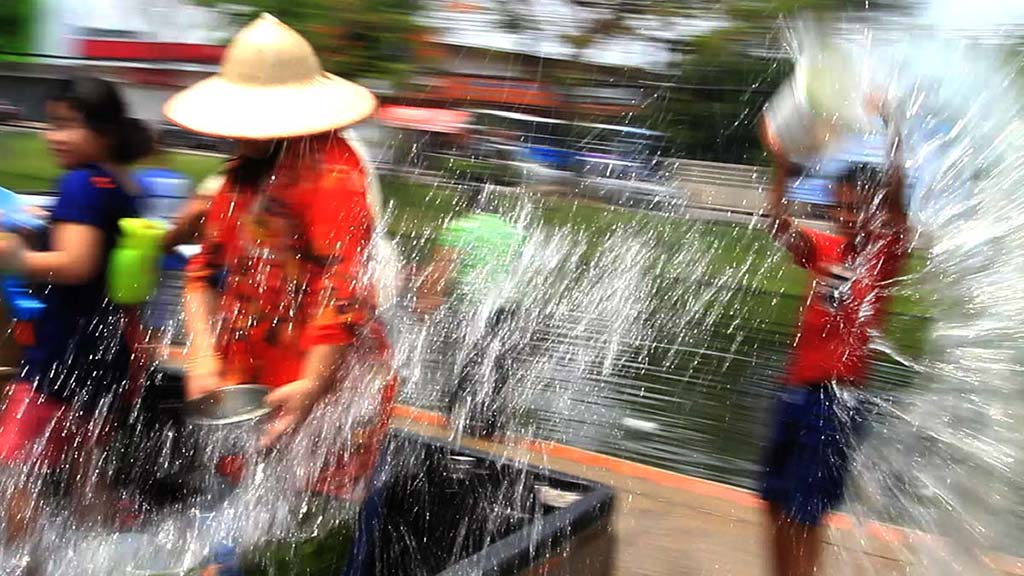
This month also leads up to the rainy season; the monsoons are eagerly awaited by rice-growers as they guarantee a good crop.
The Songkran festival is all about this: about the heat, the rain and the future of the crops. It is also all about one of the most typical summer activities: having fun.
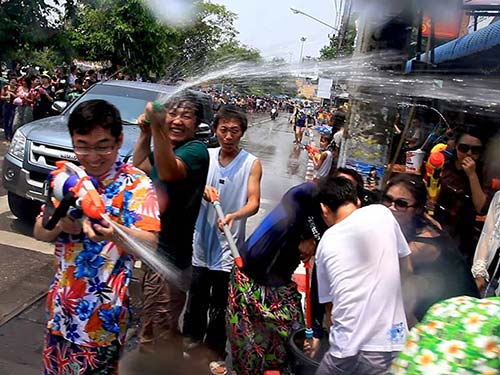
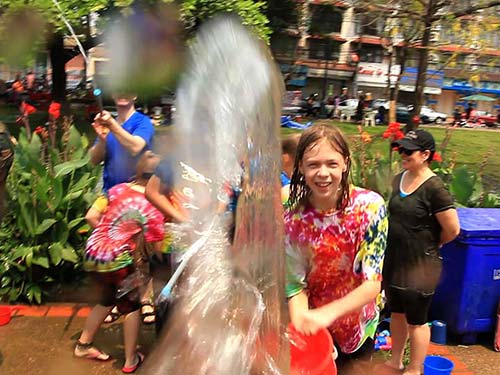
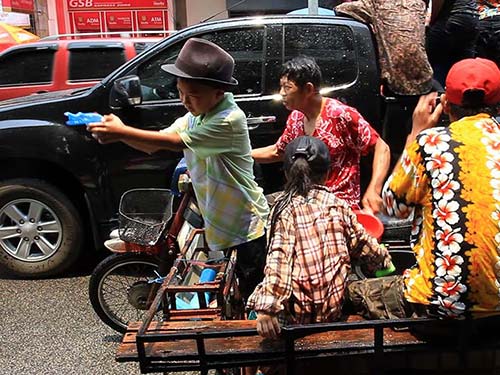
This festivity marks the New Year on the Thai calendar and it is apparently related to the Hindu Holi festival of colours.
Its name in Sanskrit alludes to the sun’s movements in the zodiac, the passage from Aries to Taurus.
The origin of this festival surely dates to before the arrival of Buddhism. The remnants of primitive animist undertones can be seen in the invocation of water spirits and the use of carnival-type costumes and masks.
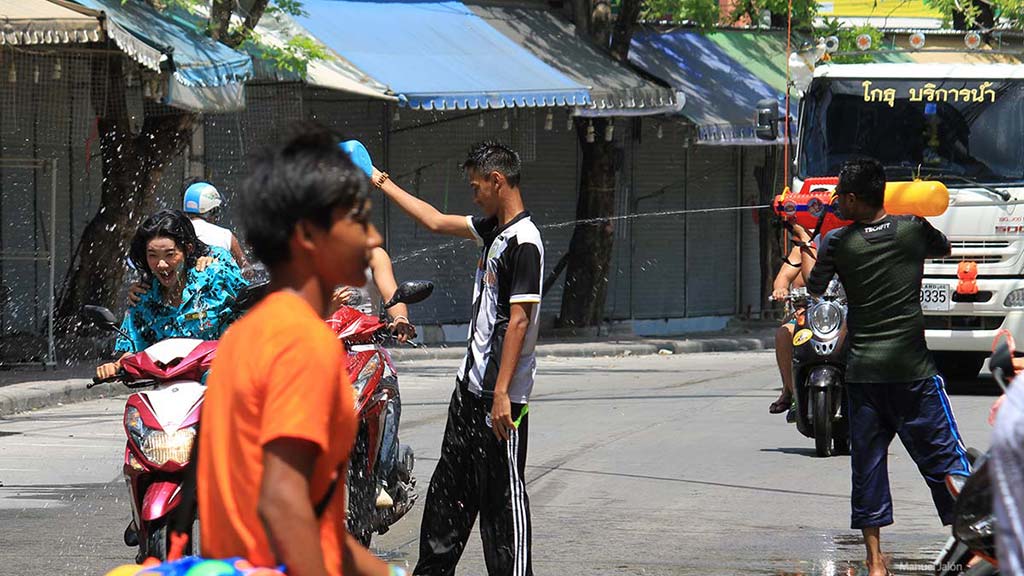
As for water battles, no one is spared and the only option is to join in with it and have a good time. It is a real treat for travellers who can experience it in towns and cities.
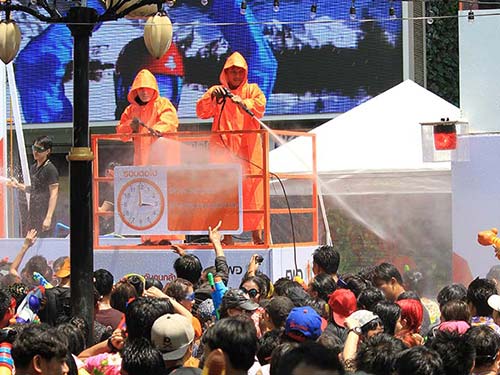
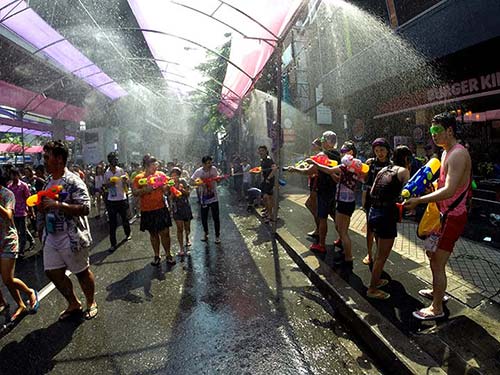
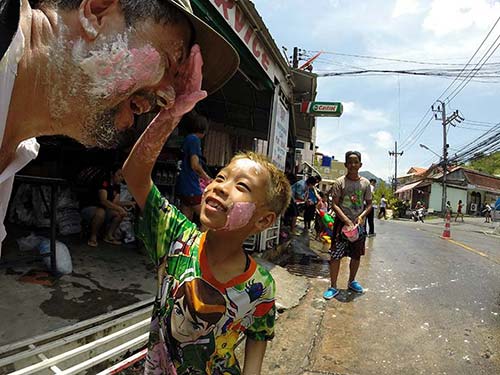
This is the only occasion when you can shoot at a policeman 😆. But not all of them take kindly to it and by the look on their faces, you’ll know which ones will accept a short blast of water with a sense of humour… if you dare!
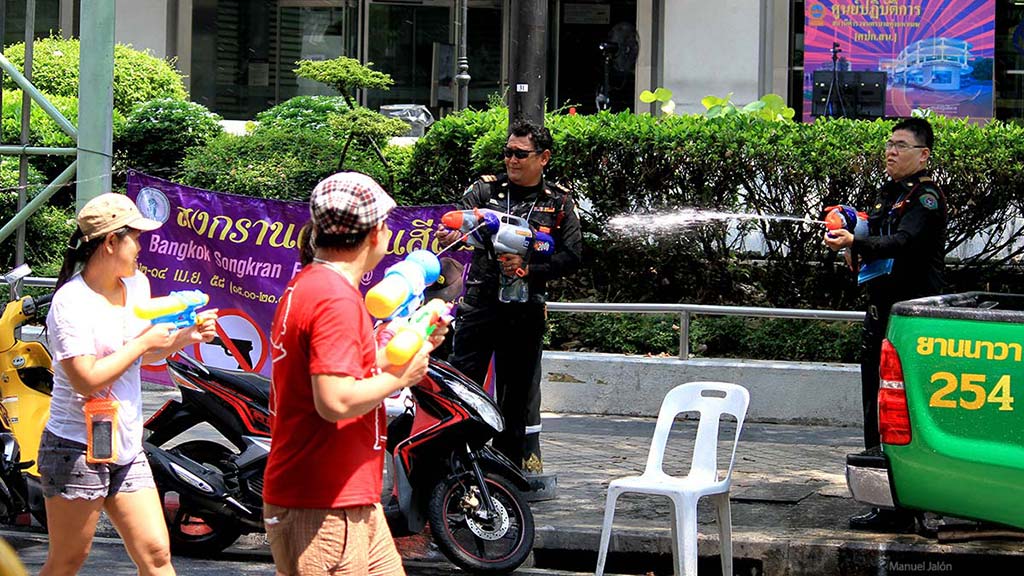
Breaking rules is characteristic of these festivities, making them all the more appealing.
Perfumed water that cleans and purifies, hosed water to offset the heat and omnipresent water to encourage the onset of more water in the form of rain.
That is what Songkran is all about.